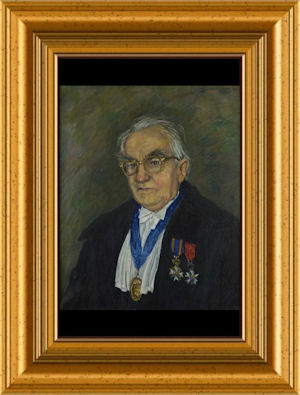Albert van Giffen (1884-1973)

Albert van Giffen’s career began in 1908 during his zoology course, when he was involved in an excavation in Dorkwerd.
Eight years later he had an important position in the Union for ‘Terp’ research, was an inspector for pre and early history at the Groninger Museum and curator of the Drents Museum. Van Giffen was responsible for some pioneering work at his dig in Ezinge, when a complete village structure was revealed for the first time.
Van Giffen developed the quadrant method which allowed burial mounds and mound villages to be dug both horizontally and vertically for maximum yield.
In 1920 Van Giffen founded the Biological-Archaeological institute. He became famous in Groningen for his archaeological digs on the south side of the main square (Grote Markt) and his excavation of the Walburg Church in the Martini churchyard I n the 1950s.
| Last modified: | 13 August 2021 3.19 p.m. |


